Matador Network's Blog, page 1162
February 13, 2019
The best way to visit Mongolia
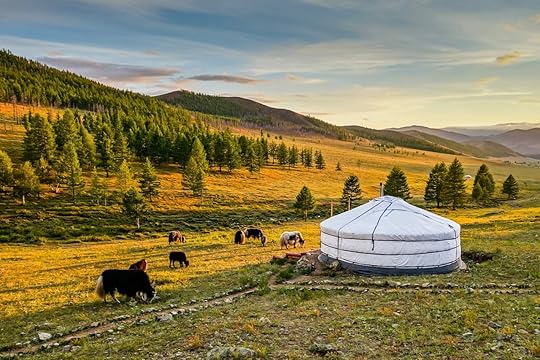
“Land of the Eternal Blue Sky” is a phrase derived from the Central Asian religion of Tengriism, which is the worship of the celestial god Tengri, whose name means “sky.” Today, it serves as Mongolia’s motto, a moniker aptly conveying the vastness of unspoiled lands under a rainless firmament. One way to experience the adventures that can unfold under Tengri’s watchful eye is by staying with a nomad family. Away from the congested capital city of Ulaanbaatar, bunking with nomads helps travelers experience Mongolia’s other world — one of peace, possibility, and, of course, endless skies. Here’s what you’ll encounter when you stay with a nomad family in Mongolia.
Access to remote regions

Photo: Mellisa Pascale
Outside of Ulaanbaatar, tourist camps serve as the typical accommodation for backpackers, and you can find them in parts of Gobi Gurvansaikhan, Gorkhi-Terelj, Khustain, and other national parks. A nomad family’s home offers the possibility to delve further into these regions and set your own pace, going totally off the map.
For example, out in central Mongolia, after you’ve encountered the wild horses of Khustain National Park or visited the old capital city of Kharkhorin, you can take your excursion over to Khogno Khan. This reserve, tucked in a horseshoe of mountains, houses the remnants of a secluded monastery, not to mention views that unite in one image: flat terrain and rolling sand dunes with striking peaks. Having a nomad family’s home as your base provides you with the insider position and flexibility to experience the range of sights born under Mongolia’s blue sky.
Animals up close
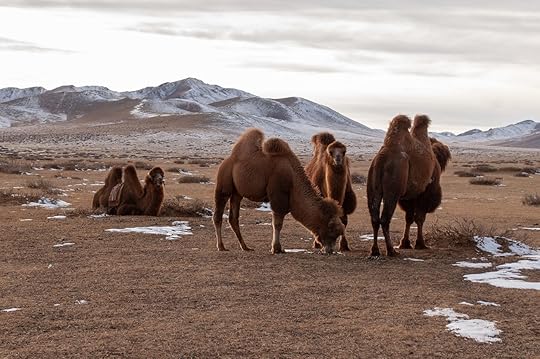
Photo: Mellisa Pascale
Nomad families have livestock and other animals under their care, giving travelers the chance to encounter a little extra adventure. In the Khövsgöl region, the Tsaatan nomads move with reindeer, a unique practice only surviving in Mongolia. Meanwhile, the Kazakh eagle hunters of Bayan-Ölgii are responsible for golden eagles, grooming them for hunting small prey. Out here, you’ll get to witness firsthand how nomads tend to their atypical livestock and use them to sustain food sources.
If you’re lucky, you might get to handle some animals yourself. Horses are a given and cherished in Mongolia, with competitive horseback riding serving as an attraction in the country’s annual Naadam festival. Camels, especially in the Gobi Desert, may also be accessible. Riding from atop one of these, you’ll get to admire the entirety of the land beneath the sky: hills rolling into mountains, roaming livestock, and distant yurts dotting the horizon.
Living out of a yurt
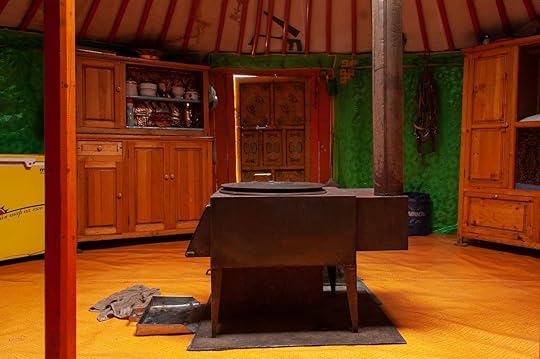
Photo: Mellisa Pascale
Whenever you mention your nomadic experience to your friends and family back home, they’re going to ask, “Did you stay in a yurt?” The correct answer is, yes, you stayed in a kind of yurt, which is the term for the round, tent-like portable homes originating in Central Asia. In Mongolia, this is more commonly called a ger, the Mongolian word for “home,” and there is a slight technical difference in the construction when it comes to supporting beams…but, let’s skip ahead to what’s inside.
A stove is the center of a yurt’s world. It’s where the family cooks and keeps warm, and you’ll feel instantly snug the moment you duck through the small, single door leading inside. There will be a few hard beds, cupboards displaying the gifts of past visitors, and a table and chairs for meals. Since you’re probably wondering, no, there isn’t a toilet in the yurt — but there will be a hole in the ground outside.
A taste of authentic flavors

Photo: Mellisa Pascale
Living on the food produced by their livestock, Mongolia’s nomad families are entirely self-sufficient. Homemade yogurt and cheeses can be made from reindeer milk, and while staying with a family, you may get to have some gambir (pancakes) for breakfast or boodog (barbecue) for dinner.
So what makes these Mongolian staples so special? For starters, nomad families don’t haul around grills. Boodog is cooked by stuffing hot coals into the stomach of a goat or marmot. You’ll probably find this meat tougher and more fatty than what you’re used to, but the smoky taste is worth the marathon your jaw will have to run. As for the pancakes, they’re just good fun — cut up into handheld pieces and served with jam rather than syrup.
An inside look at nomadic culture

Photo: Mellisa Pascale
Shagai is the term for the ankle bone of a sheep or a goat, with each of its four sides representing different livestock. In Mongolia, they have a multi-purpose function, used as both fortune-telling vessels and game pieces. The latter is a common pastime in nomadic households, and you may find yourself flicking one shagai to another or racing against other pieces.
The nomadic lifestyle is naturally one of a kind, and it’s something that curious-minded travelers will want to learn more about. Shagai isn’t the only intriguing piece of traditional Mongolian culture you’ll encounter with nomads. If you’re staying over on a Sunday night, you might see the kids off to school. Today’s nomads send their children into town to learn during the week, and they’ll return on weekends and breaks to help support the family’s livelihood. You may not realize you even had these questions and more until you’re there, rolling ankle bones on the yurt’s floor and observing the day-to-day in a Mongolian nomad family’s life.
Tradition in the present day

Photo: Mellisa Pascale
Staying with a nomad family isn’t exactly like stepping back in time. Nomads have expertly preserved cultural traditions while embracing modern amenities that help them continue with their way of life. You may witness them shuttling the kids to school in a car, going to visit another family on the back of a motorcycle, or even pulling out a cellphone. While the nomadic lifestyle seems secluded, the strength of community is never overlooked, and these tools help them access resources, communicate about wandering herds, and take care of other matters.
Today, many aspects of the nomadic lifestyle are sustained despite a changing world. For the Kazakh eagle hunters in western Mongolia, a tradition typically passed down through the male members of the family, a mixture of increased access to other food sources and declining prey populations have drawn boys away from the practice. However, this simply makes room for another group to enter the arena: girls. While women have taken up falconry throughout history, men have always compromised the majority of Mongolia’s eagle hunters. In 2016, Aisholpan Nurgaiv became the first girl to compete in the Golden Eagle Festival, an annual event testing the abilities of hunters and their eagles, and her story was documented in the film The Eagle Huntress. As shifting lifestyles affect traditional practices, Mongolia’s nomad families have not only kept their culture alive but are also sharing it with the rest of the world. 

More like this: The Golden Eagle Festival is one of the top experiences to have in Mongolia
The post Staying with a nomad family is the best way to see Mongolia appeared first on Matador Network.

JetBlue flights for just $39
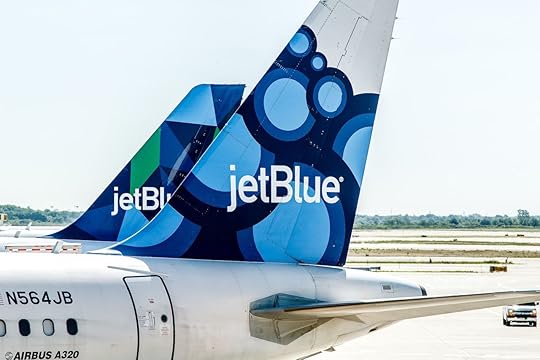
There’s nothing more romantic than whisking your Valentine away on a last-minute vacation, so JetBlue has you covered with a two-day flash sale, ending at midnight on February 13. The sale offers one-way fares for as low as $39 between cities in the US, as well as Mexico and the Caribbean. While JetBlue hubs that are close together are obviously the cheapest options, there are some great long-distance fares available, too. Here are some of our favorites.
Las Vegas to Long Beach for $39
Atlanta to Orlando for $44
Richmond to Fort Lauderdale for $49
Orlando to San Juan, Puerto Rico for $99
Boston to Mexico City for $148
Newark, NJ to Santiago, Dominican Republic for $140
Fares are valid for travel between February 26 and May 22, 2019, so even if you buy a last-minute ticket you’ll still have some time to actually plan your vacation. The advertised prices include a carry-on bag and personal item, but a checked bag will cost you $30 extra. Note that there are blackout dates between April 16 and April 24.
Visit the official sale page for a full list of destinations and prices. 
H/T: AFAR

More like this: Affordable Valentine’s Day weekend trips you can still book in the US
The post JetBlue’s Valentine’s Day sale has flights as low as $39 appeared first on Matador Network.

Southwest Airlines contest
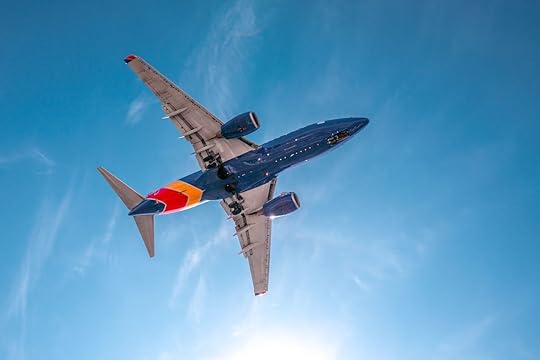
If you love traveling the world, and don’t mind spending an awful lot of time on airplanes, this Southwest Airlines job might be for you.
Southwest Airlines recently announced that it’s looking for influencers and storytellers to create travel content. Candidates will be asked to compete for the chance to win a grand prize of up to 12 round-trip tickets from Southwest, valued at approximately $4,800, according to USA Today.
The grand prize winner can expect to travel, free of charge, to 99 destinations across the US, Mexico, the Caribbean, and Central America, creating content for Southwest.
To apply, you must be at least 21 years old and have over 2,500 Instagram followers. If this is the case, then simply follow Southwest on Instagram, choose your best travel photo post, tag @southwestair, #SouthwestStoryTellers, and #contest, and write a caption that tells a engaging travel story. Southwest will choose 100 photos among the entries. The 100 candidates selected will then need to fill out a survey about their social media influencer background and why they’re a good fit for the position. Based on the survey results, 10 finalists will be chosen.
From the top 10, judges will select a single grand prize winner (who gets 12 round-trip tickets), a second-place winner (six round-trip tickets), two third-prize winners (a $5,000 Southwest gift card), and five fourth-prize winners (10,000 Southwest rewards points).
You have until February 24 to apply. The top 100 entrants will be notified around March 11. 
H/T: Travel & Leisure

More like this: Start crushing your Instagram game
The post Become a Southwest Airlines “Storyteller” and travel the world for free appeared first on Matador Network.

February 12, 2019
The most luxurious spa treatments

As they say, if you don’t love yourself, you can’t love anyone else. So why not show yourself some appreciation for all of the hard work you do? You take good care of yourself, look out for others, and meet your deadlines; you deserve a dose of self-love. One lovely idea is to explore spa pampering that goes well beyond the traditional massage or facial. After all, love is a many splendored thing, but so are you. If you are looking for some ideas on how to treat yourself this Valentine’s Day, here are the eight most luxurious spa treatments from around the world to spark your imagination.
1. Eight-handed massage, The Spa of the Four Seasons Resort Mauritius at Anahita, Mauritius
Travel to this tiny island nation off the east coast of Madagascar can be brutal, but once there, seekers of luxury won’t be disappointed. The “Let it go” is an indulgence found few other places in the world. This signature treatment takes place in an overwater villa and originates in Ayurvedic philosophy, aimed to balance the body’s energy and relax the mind. The hands of four highly trained therapists work in synchronicity, like a “dancer’s choreography,” on the body to release stress, emotional weight, and leave the recipient with a sense of total rejuvenation.
Cost: $750 (60 minutes), $1,050 (90 minutes)
2. The perfect 10 spa experience, Spa Montage, Beverly Hills, California

Photo: Spa Montage Beverly Hills/Facebook
Meant to get celebrities red-carpet-ready, for those who don’t have such fame it’s just face-the-world ready. The “perfect 10” combines 10 treatments in one day, including a 90 minute body-firming detox treatment of dry brushing and an algae wrap; a 60-minute Swedish massage; a “Beverly Hills” manicure and pedicure, both of which include hot stone massages and a dusting of 24-karat gold; and an L. Raphael “Royal C” treatment, a technologically advanced facial using concentrated oxygen and Vitamin C to “reduce protein fiber damage while enhancing collagen production.” Lucky partakers then head to the Kim Vō Salon for a haircut, color, and blowout. Not limited to just spa treatments, this experience also includes a reserved spa cabana for rest and dips in the mineral wellness pool between treatments, a full lunch, and snacks of pressed juice and fruit, champagne and crudités.
Cost: $5000
3. Ancient Mexican Remedies, The One and Only Palmilla, Los Cabos, Mexico
Inspired by traditional indigenous medicine and healing ceremonies, the journey of this one-of-a-kind treatment begins with a smoke bath of copal and aromatic herbs and a purifying foot wash. A sea salt and desert herb exfoliation follows, helping to soften and oxygenate skin. A warm medicinal herb body wrap is then applied and accompanied by a deep massage, then facial cleansing and moisturization. The final leg ends with a kick of strong tea made of cactus root to help the body absorb the benefits of the treatments.
Cost: $675 (180 minutes)
4. The world’s most luxurious spa experience, Talise Ottoman Spa, Dubai, UAE

Photo: Jumeirah/Facebook
This spa at the five-star Jumeirah Zabeel Saray hotel overlooking Palm Jumeirah boasts a bevy of awards for its pampering skills, from Hotel Spa of the Year 2018 to World’s Best Resort Spa. There’s no scrimping here, and “the world’s most luxurious spa experience” is true to its name. Meant to be enjoyed by two, the experience takes place in a private spa suite and features an Arabian gold hammam, 24-karat gold mask, a skin-softening rose bath, and a “Diamond and Rose” body ritual consisting of an exfoliating massage followed by oils and skin conditioners for velvety soft, younger-looking skin. Because this level of pampering can’t be rushed, it includes a complimentary one-night stay, a caviar and champagne lunch, and spa gifts to go.
Cost: $6800
5. Abhyanga/Shirodhara, Clinique La Prairie, Clarens, Switzerland
La Prairie operates celebrated spas around the globe, so why not head straight to the source? Once there, guests find plenty of luxurious choices, including this classic, eastern combination. The Abhyanga massage uses warm, organic sesame oil and long sweeping strokes to soothe the body, ending with a focused head massage. The addition of the traditional Shirodhara treatment ups the bliss level: It’s a continuous stream of warm sesame oil poured across the forehead and scalp to promote rest. It is said to be particularly good for those who have trouble sleeping.
Cost: $550 (120 minutes)
6. Ultimate Radiance Aesthetic Facial, Peninsula Spa, Hong Kong, China

Photo: The Peninsula Hong Kong/Facebook
A non-invasive treatment that uses ultrasonic waves to stimulate new collagen in the deepest layers of the skin, this facial has nearly immediate results. Without disrupting the skin’s surface, in ways that invasive treatments such as surgery or botox can, this facial reduces wrinkles and combats signs of aging by tightening the skin. Four treatments per week for the first month are recommended, followed by monthly maintenance. A good option for those looking for a luxurious treatment, a big change, and no side effects.
Cost: $875
7. The Ultimate Indulgence Facial, Peninsula Spa, Beverly Hills, California
Not be outdone by anywhere else in the world, Beverly Hills certainly offers up the most in the luxury spa treatment category. This interesting option is science-based: the six-in-one treatment takes advantage of technology to do a lot of work, in just a little time. Diamond-tip microdermabrasion resurfaces the skin, sloughing away dead cells for a dewy glow. Skin is then blasted with oxygen to promote firming, followed by radio-frequency therapy to assist oxygen supply, LED light and color therapy to balance the complexion, air massage to rid the skin of potential toxins, and, finally, electroporation to expose the skin to electricity to improve its capacity to absorb all this good stuff.
Cost: $1500 (120 minutes)
8. Desert Dream, The Spa at Amangiri, Canyon Point, Utah

Photo: Aman Resorts/Facebook
Taking the usual spa treatment to another level, this expansion of consciousness includes flotation therapy. This treatment begins in a pool of warm water, with gentle cranial sacral therapy and reflexology, before leaving you alone in darkness, left to float untouched in weightless oblivion. A steam shower revives the body before a relaxing aromatherapy massage, ending with a short Crystal Sound bath to enliven all the senses.
Cost: $475 (135 minutes) 

More like this: 7 things you need to know about the woman who travels solo
The post The most luxurious spa treatments to treat yourself to around the world appeared first on Matador Network.

Skiing in Santa Fe, New Mexico
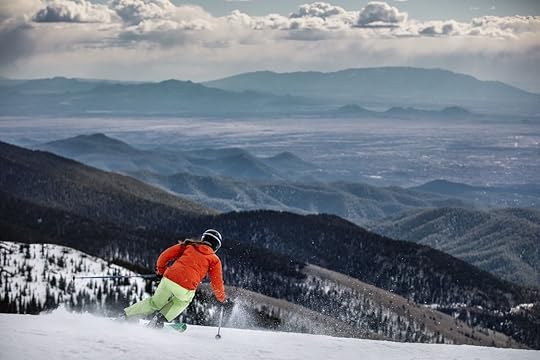
Ski weekends aren’t easy anymore.
Once they were simple escapes to the snow where you could shell out a little money for a lift ticket, sleep on floors, and eat Power Bars on the chairlift. But as we get older, they become full-on mini vacations. A ski destination now has to have good places to eat. And breweries. And maybe even a spa for a post-ski massage.
Those places exist, but they’re also full of vacation-like prices, with $130-a-day lift tickets that earn you the right to wait in 10-15-minute lines. In cities with booked-up, expensive hotels and overpriced restaurants that still have three-hour waits.
Santa Fe, on the other hand, has none of that — mostly because nobody ever thinks of it as a ski destination. At the southern tip of the Rocky Mountains, you’ll find every bit the first-class ski weekend you’d find in Aspen, Tahoe, or Park City. With prices and crowds that aren’t even close.
No, the skiing, shopping, and luxury here aren’t in abundance the way they are in those A-list ski towns. But for a recreational skier looking for a few days away, it’s perfect. Santa Fe offers an escape that feels entirely different from anywhere you’ve been before, and for a brief few days, it will give you a true feeling of place along with great restaurants and beautiful skiing.
America’s second-oldest city, with just enough history to keep you interested

Photo: Edwin Verin/Shutterstock
The first thing you notice when rolling into town after an hour’s drive from Albuquerque is that everything in Santa Fe is adobe. From the time New Mexico became a state in 1912, the city began enacting building codes to keep its clay-and-straw motif, giving it that same you-can-only-find-it-here streetscape you’d find in the mansions of Natchez or Art Deco Miami Beach.
Santa Fe is also the second-oldest city in America, and like their neighbors in Texas, they aren’t shy about sharing the accolades. You’ll find yourself wandering out of a pizza shop and happening upon the oldest continuously inhabited house in the nation, a little two-story adobe structure that’s been standing since 1646. Across the street you’ll find the United States’ oldest church at the also-adobe San Miguel Chapel. Downtown’s Palace of the Governors is the oldest continuously used public building in America, dating back to the 1600s. It’s home to the New Mexico History Museum.
The city has also drawn artists in droves since Georgia O’Keeffe and her contemporaries resettled here in the mid-20th century. Taking a Routes Bicycle Tour through the galleries along Canyon Road, you can experience the highlights of the scene in a couple of hours, without ever feeling pressured to shell out 10 grand for a sculpture. The art and history of the city are fascinating, and there’s just enough to knock out on a Friday afternoon before hitting the slopes.
The best skiing you didn’t know existed

Photo: Tourism Santa Fe
A ski weekend feels most successful when you spend your days expending calories in the fresh air and the nights consuming calories in the most delicious ways possible. With maybe a little luxe pampering in between. Santa Fe does all of those as well as anyone, for surprisingly little money.
About half an hour into the Sangre de Cristo Mountains you’ll encounter Ski Santa Fe, a high-altitude day resort that’s a challenging mix of perfectly groomed wide runs and mogul-filled tree trails. At this 10,000-foot terrain, beginners can feel comfortable challenging themselves without too many people on the mountain, and advanced skiers will have enough technical trails to challenge them for a couple of days.
The altitude makes the mogul-heavy black runs tougher than usual as your legs burn faster with less oxygen available. The narrow paths through trees feel a little like the icy, careening runs in Vermont, minus the sheer ice. And the groomed runs move faster than you’d find in powder-heavy locales like Utah.
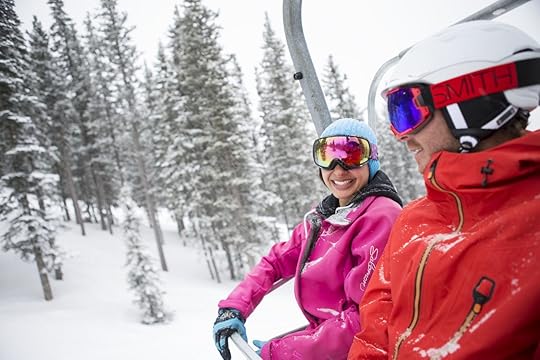
Photo: Tourism Santa Fe

Photo: Tourism Santa Fe
Santa Fe’s anonymity among skiers and its relatively remote location keep the crowds down too. So nervous beginners won’t get intimidated, and advanced skiers can operate with a little more freedom. Prices here won’t kill you either, with lift tickets running $80 a day and no lines at the chairlifts.
The only time you might encounter anything resembling a crowd at Ski Santa Fe is at the on-mountain bar Totemoff’s. On a sunny Saturday afternoon, you’ll hear the resort’s live bands playing Jimmy Buffet covers and smell the grilling burgers before you reach the end of your run. Once finished, you can spend as long as you like relaxing in the sun with a local craft beer, enjoying the music and the sunshine like you’re at a summer picnic on the side of a snowy mountain.
Indulgence of the body, and the palate
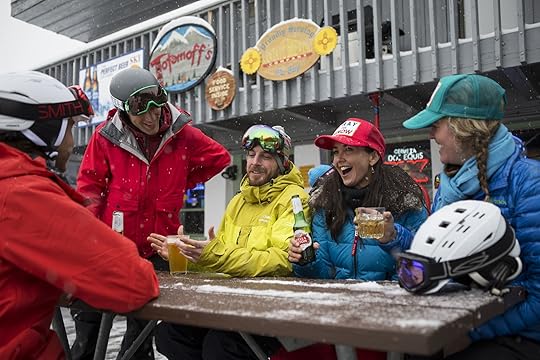
Photo: Tourism Santa Fe
Conveniently located on road back to town is the Ten Thousand Waves spa, a Japanese onsen experience mysteriously dropped on the side of a mountain in New Mexico.
The spa has a sprawling main bathing area where guests in swimming attire wallow in warm waters among bonsai and aspen trees, a mix of vegetation that transports you from New Mexico to the mountains of Honshu. Calming waterfalls, a foot bath, and a grass-mat meditation room create the perfect end to a vigorous day of skiing, simultaneously relaxing and rejuvenating your body for the reasonable entrance fee of $28.
Once back in town you’ll be treated to one of the best small culinary cities in America where you’ll find menus rich in moles, grilled meats, and chili-everything. Most of which will stuff you like a poblano pepper for less than $50 a person.
Santa Fe has plenty of approachable New Mexican restaurants with equally splurge-worthy food. La Choza is the locals’ favorite, with the sort of authentic New Mexican ambiance chain restaurants try to emulate. The bustling bar is filled with young locals enjoying arguably the city’s best margaritas; white tile floors and brightly painted walls immerse guests in the dining room. Stacked enchiladas and all forms of chili highlight a menu full of delicacies you won’t likely find at home.
The city’s most impressive dining experience is at Sazon, Santa Fe’s lone AAA Four Diamond restaurant. Here, chef Fernando Olea presides over his kitchen in jeans and a cowboy hat, making sure stuff like his Cholula — peppers stuffed with lamb, pork, beef, and dried fruits, served with balsamic jalapeno and creamy walnut sauce — is plated exactly in his vision.
During his nine-course Mexican dining adventure, servers place and remove courses like a synchronized drill team, the chef announcing each plate as his head waiter calls cadence. Set among provocative modern art, the restaurant is one of the great dining experiences in America — calling to mind the sort of unique dinner one finds in Madrid or Modena and still talks about decades later. All for a reasonable $150 per person.
If you’re looking for pre- or post-dinner drinks, you might follow Santa Fe’s Margarita Trail. It will take you through some of the city’s more notable restaurants, including the famous La Fonda on the Plaza hotel. This former hangout for nuclear scientists during World War II is steeped in clandestine history, where during the war much of the staff was spies sent to make sure scientists weren’t divulging secrets when they took down a few too many margs. The Soviets sent a number of agents to work the hotel lobby, too, trying to see what America was plotting.
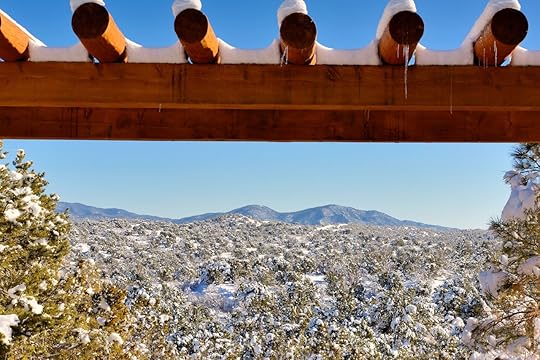
Photo: Tourism Santa Fe
If you’d like to be as close to the margaritas as possible, hotels in Santa Fe aren’t absurdly expensive either. The La Fonda is under $150 a night. The spa-focused Hotel Santa Fe is under $130. And even if you want to splurge, The Four Seasons Rancho Encantado — the luxury jewel of the city on a majestic southwestern ranch just outside of town — is well under $300 a night. Not headline-grabbing bargains, but easily manageable for a weekend.
You won’t find an abundance of choices in Santa Fe, but you’ll find just enough of everything to make for a perfect weekend. The skiing will challenge you enough to be entertained but won’t overwhelm you with choices. The food is as great as you’ll find in huge cities, if you only need to have a few great meals. And the fresh mountain air and relaxation will refresh you before heading on a plane back home. With affordable hotels, food, and recreation, it’s a weekend escape that won’t break your bank. And the perfect place for one last hurrah of winter. 

More like this: 3 awesome ski vacations you should be planning now
The post Looking for one last big ski weekend? Look no further than Santa Fe appeared first on Matador Network.

Mount Assiniboine Provincial Park
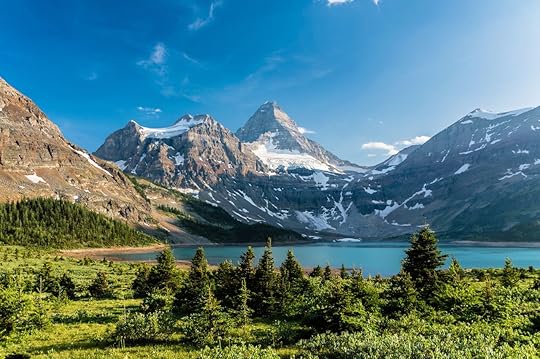
Mount Assiniboine Provincial Park in British Columbia has everything the Canadian Rockies are famous for — including craggy mountain peaks and turquoise lakes — but without the crowds you get in a place like Banff National Park. With no roads in or out, the park is essentially undeveloped. Aside from an old backcountry lodge, a smattering of rustic log cabins, and a barebones campground, the only development you’ll find is a network of hiking trails connecting you to some of the most beautiful and pristine backcountry you can find anywhere.
Getting there

Photo: Dan Arnett
Without those roads, you have only two options to arrive at Mount Assiniboine Provincial Park: Hike in on one of the two main trails connecting the park to the outside world, or save your legs some hard work and helicopter in. When I visited in 2016 we were operating on a pretty narrow timetable, so we took the chopper in. It’s about $130-$150 one way, at current exchange rates, depending on which helipad you fly out of. While it’s obviously the more expensive choice, the whirlybird saves you a lot of time and also gives you some unforgettable views. Just hold your camera up to the window, point, and snap. You’ll get one of the best pictures you’ve ever taken.
Still, depending on your schedule and your budget, it might not be worth it to shell out upwards of $150 (CAD $200) just to get there. If you decide to hoof it in, you’ve got two main options. If you’re coming from the north, closer to Banff, you’ll park your car at Sunshine Village Ski and Snow Resort, then make the 18-mile journey south. While this is the longer hiking option, it’s also the easiest as there is very little elevation gain. For a shorter but more strenuous route, you’ll ditch the car at the Mount Shark trailhead 25 miles south of Canmore, and make the strenuous yet beautiful trek via Wonder Pass. It’s possible to do this all in one day, provided you get up early enough, but it’s easier to spend a night at the Bryant Creek shelter.
One more note of caution here: Although the aptly named Wonder Pass is a marvel to behold, it is also known for high levels of grizzly activity. In fact, the section between Bryant Creek and Mt. Assiniboine stays closed during August and September to limit human-bear interaction. Use standard grizzly precaution here: Hike in a group, announce your presence with some noise as you go, and make sure you’re carrying bear spray.
Where to stay
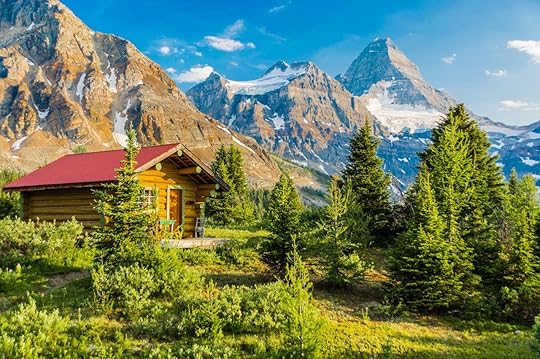
Photo: Benedikt Juerges/Shutterstock
The core of the park centers around Lake Magog, a stunning glacial lake that reflects the snow-capped cornice of Mt. Assiniboine. Within a couple kilometers of the lake are some backcountry campsites, a group of primitive cabins called the Naiset Huts, and the historic Assiniboine Lodge.
Should you choose to camp, you’ll need to make reservations far ahead of time. Backcountry camping is strictly regulated in order to preserve the wilderness, and while the park may be remote, the few campsites here are in high demand, especially in the summer months. While the sites themselves are spartan and fires are not allowed, there’s a handsome common area complete with a massive picnic shelter, bear lockers, running water, and grey water disposal. A sprawling network of trails connects the sites with the rest of the lodge area. While you’re never too far from the lodge, the lake, or trail access, you still have a sense of privacy and solitude in the woods.
If the backcountry camp sounds a bit too rough, you may want to check out the rustic Naiset Huts. Connected by a series of trails and boardwalks over the alpine meadows surrounding the lodge, each one-room log hut contains a wood-burning stove and can sleep five to eight people. While the Naiset Huts do not have kitchens, there is a communal kitchen building that all hut residents share. Staying in a hut is a great way to stay warm, feel a bit more secure, and enjoy a greater sense of community.
But if money is no object, then you owe it to yourself to stay at the Assiniboine Lodge. Built in 1928 and located 16 miles from the nearest road, the lodge is North America’s first backcountry ski lodge. Nearly a century later it still provides welcome comfort to adventurers who travel so far from civilization to explore this unspoiled wilderness. Each cozy bedroom has a private woodburning stove and can accommodate up to three people. All meals are included during your stay — including a packed lunch for your day trips — and guided hikes are complimentary. After a long day in the wilderness, return to the historic dining room for a three-course meal with a selection of wine and beer.
What to do
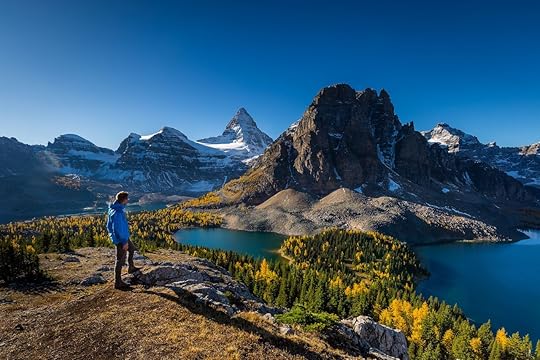
Photo: Pavel Tvrdy/Shutterstock
The most popular activity by far is hiking. With miles of pristine trails cutting through alpine forests, unrolling over flowered meadows, and hugging glacial lakes, the park is a hiker’s paradise. One of the longest hikes in the area takes you from the lodge past nearby Lake Og up to the heights of the aptly named Windy Ridge. Although the views are worth it, don’t underestimate the “slog from Og” as it is known; give this one a good chunk of your day.
A more casual stroll will take you to Cerulean Lake and Sunburst Lake, whose sapphire waters are hemmed in by pines and the towering peaks of the snow-capped Rockies. The park’s signature hike is what’s commonly referred to as “The Nub.” Don’t let its diminutive nickname fool you; this small, rocky perch offers the biggest views in the park, a panorama that is the stuff of photographers’ dreams.
If you’re like me, then it’s hard to look at all this water without wondering if there are some fish in there. While trout are not native to these lakes, they were indeed stocked in the early days of the lodge and can still be found in good numbers and healthy size today. And while the park is by no means an angling destination, you can still have some pretty decent luck even with modest equipment.
Right before our helicopter ride, I ran into a Canadian Tire (sort of like a Wal-Mart) and got a basic rod and reel plus some spoons all for about 30 bucks. Whichever lake you fish in, look for rocky features and cast about 30 to 45 feet from the bank with a slow retrieval to give your spoon some time to sink. I had my best luck at Cerulean Lake and Lake Magog. The best spot was right where a stream emptied into Lake Magog. Keep casting into that confluence and you’re sure to reel in a decent sized rainbow, brown, or cutthroat. Just make sure you’ve got a British Columbia fishing license. They’re available at the lodge. 

More like this: 15 US state parks that are just as epic as national parks
The post This stunning park in Canada has no roads in or out. You need to go anyway. appeared first on Matador Network.

History of Umuganda in Rwanda

Ten years ago, telling someone you had plans to visit Rwanda might have been met with raised eyebrows. Despite the fact that the Rwandan Civil War ended in 1994, the horrific genocide against the Tutsi people lingered in the global memory, and in some cases, it was all people knew of the East African nation.
Rwanda has made massive strides to rebuild in the aftermath of the atrocities, and in many ways, it’s been a successful journey. Tourism in Rwanda is becoming incredibly popular, especially among those keen on gorilla trekking in Virunga and other outdoor opportunities. But the country’s campaign to revitalize its image was well underway even 10 years ago. In fact, it was a decade ago this year that a nationwide community work day called Umuganda was institutionalized to promote peace, unity, and prosperity throughout the nation.
Umuganda can be translated as “coming together in common purpose to achieve an outcome,” a practice that has long existed in Rwandan culture but only recently became mandatory. On the last Saturday of every month, from 8:00 AM to 11:00 AM, businesses close and traffic halts as citizens across the country take to their neighborhoods, shovels and hoes in hand, and together try to make them a little bit better than they were the month before.
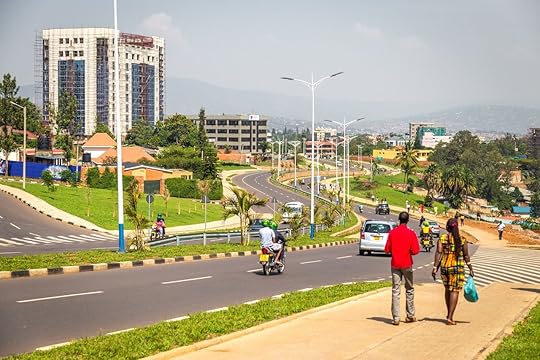
Photo: Stephanie Braconnier/Shutterstock
Projects range from digging drainage ditches to street sweeping. All able-bodied citizens between the ages of 18 and 65 are expected to participate, and dodging the civic duty can result in a fine or even arrest. It’s a steep penalty, but President Paul Kagame sees the practice as an important opportunity to improve both Rwanda’s social and physical landscapes.
While some projects focus more on infrastructural developments like building schools and housing for those in need, a significant percentage of Umuganda efforts center on environmental protections and public cleanup. According to the Rwanda Governance Board (RGB), “Generally, people participate in cleaning streets, cutting grass, trimming bushes alongside the roads, planting trees, and repairing public buildings.”
An impact assessment conducted by the RGB cites the economic value of the community work day projects from 2007 to 2016 as $127 million based on activities like reforestation and road maintenance. When asked about Umuganda’s impact, more than half the population noted the positive effect on neighborhood cleanliness, and 16.3 percent recognized the effect on air quality and overall improvement in the environment.
It’s rare to see much litter in Rwanda, even in capital city Kigali, which is frequently called the cleanest city in Africa. Visitors are often surprised by how spotless the streets are, but anyone in town for Umuganda can begin to understand why the nation looks so tidy.

Photo: Jennifer Sophie/Shutterstock
Of course, it helps that plastic bags have been banned in Rwanda for more than a decade. In a pioneering environmental move, the government made using, selling, and bringing non-biodegradable polythene bags into the country illegal in the 2000s.
Travelers have had their luggage searched and plastic confiscated at the Kigali airport. Smugglers face more serious consequences. Much like the penalty for shirking Umuganda responsibilities, ignoring the plastic bag ban can even result in jail time.
As much as Rwanda has gained traction among travelers, it’s still a big question mark for some. Getting the word out about progressive programs like Umuganda sheds light on a nation that has long been an example of how to recover from a devastating conflict with grace, hard work, and community involvement.
It’s also a great way to get more hands on deck for cleanup efforts.
Citizens may be required to participate in Umuganda, but expats and tourists are invited to roll up their sleeves and help out on the last Saturday of the month, as well. How’s that for a reason to visit Rwanda that doesn’t involve great apes? 

More like this: This US cycling team is showcasing the benefits of biking in rural Rwanda
The post How Rwanda’s mandatory community work day made Kigali the cleanest city in Africa appeared first on Matador Network.

Real restaurants from TV and movies

Restaurants, cafes, bakeries, bars, and the like are often a vital part of a story’s plot. Maybe it’s where a group of friends have coffee and spend time together or where two characters plan a murder. We all wish places like Central Perk from Friends existed or that we could visit The Three Broomsticks in Harry Potter for a Butterbeer. Unfortunately, while shows and movies use a myriad of filming locations all over the globe, not all of these are accessible — or even real — for fans to visit.
There’s good news for fans of all things big screen and small screen, however. There are a number of well-known shows and movies that use real-life locations you can see for yourself. From a bistro in Paris to a fast-food joint in New Mexico, here are 13 places from TV and film that you can actually eat at.
1. Shalom Grill from The Avengers
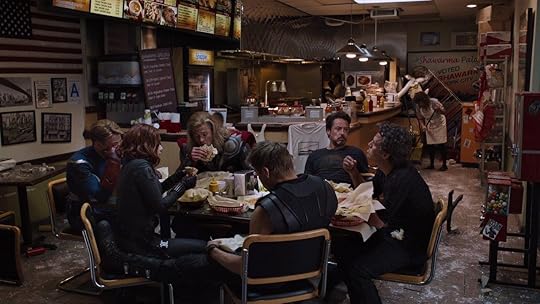
Photo: Marvel/Disney
After a long and rough day at work, people just want to eat a good meal and relax. No one knows that better than the Avengers who, after saving New York City from Loki’s madness and the Chitauri army, ended up at a shawarma joint to let loose and dig into some meat. The location used for that post-credits scene in The Avengers is real, and fans in Los Angeles can visit and stuff their faces, too. Previously named Elat Burger, it’s now called the Shalom Grill after being purchased by the Shalom Grill Corporation. Its menu is entirely kosher and consists of sandwiches, burgers, and salads, as well as schnitzel, falafel, and shawarma.
Where: 9340 Pico Blvd, Los Angeles, CA 90035
2. Katz’s Delicatessen from When Harry Met Sally

Photo: Columbia Pictures
Katz’s Deli is a New York City institution. Open since 1888, this deli is known and loved for its sandwiches stuffed with meats like corned beef and pastrami. When rumors began circulating that Katz’s might close because of developers eyeing the Lower East Side space to build condos, people were outraged. Katz’s managed to cut a deal by selling off its nearby properties, allowing the meaty goodness to stay. In addition to its kosher food, Katz’s is famous for being the location for a scene in When Harry Met Sally, a 1989 romantic comedy that poses the age-old question of whether or not men and women can just be friends. There’s a sign above the table where Harry and Sally sat that reads “Where Harry Met Sally… Hope You Have What She Had!” You can have what Sally’s having, but maybe avoid faking an orgasm in the deli.
Where: 205 E Houston St, New York, NY 10002
3. Bistrot La Renaissance from Inglourious Basterds
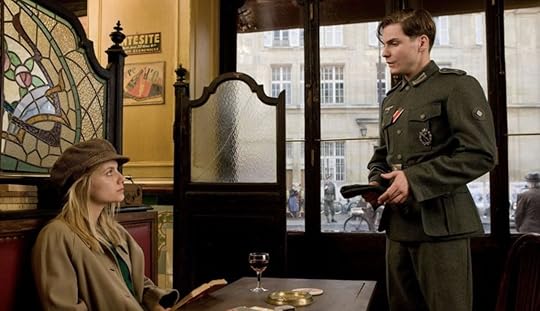
Photo: The Weinstein Company
Bistros are a quintessential part of the Parisian dining experience, and you’d be remiss not to visit one on your next trip to the French capital. Quentin Tarantino might have had that in mind when choosing Bistrot La Renaissance as the location for two significant scenes in Inglourious Basterds, a war comedy that tells the story of two separate plots to kill Nazi Germany leadership. The decor is as Parisian as it gets, with seating both inside and out, stained-glass windows, and tons of natural light.
Where: 112 Rue Championnet, 75018 Paris, France
4. The Thirsty Scholar from The Social Network
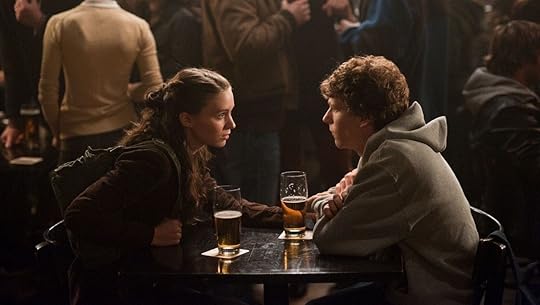
Photo: Columbia Pictures
The Social Network is a 2010 biographical drama that depicts the story of Facebook’s founding and the ensuing drama between the founders. The script has so many quotable lines and scenes — who could forget Andrew Garfield’s Eduardo Saverin storming into the Facebook offices and yelling that he’ll be coming back for more than 30 percent — but one of the most memorable is the movie’s opening, where Mark is dumped by his girlfriend Erica, which essentially kicks the whole Facebook ordeal into gear. It all takes place inside a busy bar that actually exists in real life and can be found in Massachusetts, which is where The Social Network takes place. Known as The Thirsty Scholar, visitors can grab a beer and try something off of its extensive menu. Opt for its famous Scholar Nachos made with melted cheddar jack cheese, fresh tomato salsa, jalapeños, olives, and sour cream, or get something even heartier like bangers and mash.
Where: 70 Beacon St, Somerville, MA 02143
5. New York Grill at the Park Hyatt Tokyo Lost in Translation

Photo: Focus Features
If you’re a Bill Murray fan who needs an excuse to visit Japan, then this is it. Critically acclaimed Lost in Translation is set in Tokyo and is about a movie star named Bob Harris and a newlywed, Charlotte, who both are conflicted about the lives they’ve been leading thus far. They end up staying at the same hotel, and the first time they have a real interaction with each other is at the hotel’s bar, which has a gorgeous view of the surrounding metropolitan area. That bar is the New York Grill at the Park Hyatt Tokyo. Located on the 52nd floor, the restaurant is breathtaking both inside and out with floor-to-ceiling glass windows. Making a reservation in advance is recommended if you want to sit at a table rather than at the bar, and there’s slight dress code — no dress shorts, beach sandals, or male sportswear. And of course, you need to order Suntory whisky, even if the specific bottle of 17-year-old Hibiki that launched a global obsession with Japanese whisky has been discontinued.
Where: Japan, 〒163-1052 Tokyo, Shinjuku, Nishishinjuku
6. Bridges Restaurant and Bar from Mrs. Doubtfire

Photo: 20th Century Fox
Mrs. Doubtfire is about a voice actor named Daniel Hillard (played by Robin Williams) who tries to get back into his family’s life after his wife files for divorce. He does so by using his voice acting skills and dressing up as a nanny. Later on in the movie, Hillard has to attend two events held at the same restaurant — one important for his career as himself, and one important for his family as Mrs. Doubtfire. In the hilarity that ensues, Hillard attends both and changes clothes in the bathroom multiple times. It ends with Hillard getting tipsy, performing the Heimlich maneuver, and revealing Mrs. Doubtfire’s true identity to his ex-wife. This was all filmed at Bridges Restaurant and Bar in Danville, California, where chef Kevin Gin merges Californian food with that of Europe and Asia.
Where: 44 Church St, Danville, CA 94526
7. Twede’s Cafe from Twin Peaks
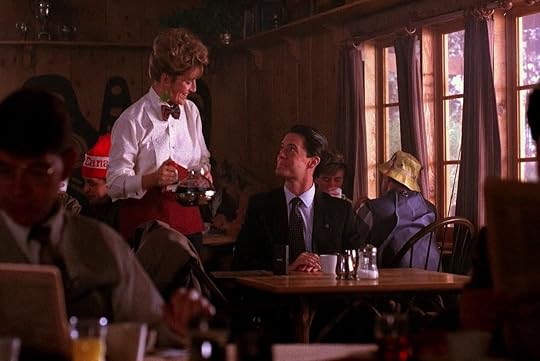
Photo: ABC
Crime dramas seem to be all the rage these days, but before there were Netflix documentaries about serial killers launching every week, there was Twin Peaks. While it was cancelled in 1991 after three seasons, the show’s cult following remained and an 18-episode continuation of the series, with much of the original cast and crew, aired in 2017. Perhaps the most quoted line of the series is from the pilot when FBI agent Dale Cooper says, “You know, this is, excuse me, a damn fine cup of coffee,” after he tries the coffee a waitress has just poured him. This line and shorter versions of it can be found on mugs, buttons, pins, posters, and the like. The scene took place in the Double R Diner, which is actually Twede’s Cafe in Washington state. We recommend having a slice or two of the cherry pie and a cup of coffee — it’ll be damn fine.
Where: 137 W North Bend Way, North Bend, WA 98045
8. Tom’s Restaurant from Seinfeld

Photo: NBC
Seinfeld aired for 10 years and is one of the most beloved sitcoms in television history. It takes place in New York City, and one of the locations that Jerry and his friends frequent the most is Monk’s Cafe. All of the filming for the show was done in studio in Los Angeles, but Tom’s Restaurant on the Upper West Side was used for Monk’s exterior shots. Despite the lack of filming inside, fans still flock to Tom’s in droves. It’s been run by the same family since it opened, and it still serves classic diner food. As an extra special treat for fans, the restaurant’s walls are lined with Seinfeld-related photos and memorabilia. And just like George did for Elaine, you can order a “big salad.”
Where: 2880 Broadway, New York, NY 10025
9. Holsten’s from The Sopranos

Photo: HBO
No matter what generation you’re from, everyone knows about The Sopranos — even if you haven’t seen it. The finale is one of the most talked about finales of all time, and rightfully so. After Tony Soprano has his win over the mob boss in New York, he goes to a diner and sits in a booth with his wife and son. While they wait for their daughter to arrive, a number of peculiar and contrasting moments occur. As “Don’t Stop Believin’” plays, the camera pans to different characters within the diner, and after showing the daughter’s so-so parallel parking ability, she begins to walk into the diner. Tony looks up and the screen instantly cuts to black and is dead silent for at least 10 seconds afterwards. This concluding scene has sparked discussions that have lasted years, and you can participate in the decade-old conversation while sitting in the diner where it all happened: Holsten’s in New Jersey. Order onion rings and a Coke to truly relieve The Sopranos moment, but also be sure to try some of Holsten’s famous homemade ice cream, too.
Where: 1063 Broad St, Bloomfield, NJ 07003
10. For N 20 from Parks and Recreation

Photo: NBC
Leslie Knope loves a lot of things, but three of them rank higher than most: Ben Wyatt, her job, and JJ’s Diner. JJ’s Diner is set in the fictional town of Pawnee, Indiana, and the exterior and interior shots were filmed in two separate locations. We’ll talk about the location used for the interior here, For N 20, because there’s nothing like walking inside and seeing where the characters sat. You can’t get the waffles with whipped cream that Leslie loves so much, or Ron’s Four Horse-Meals of the Egg-Pork-alypse, but you can get other breakfast foods, something off of its lunch and dinner menu, or some delicious pie.
Where: 5530 Van Nuys Blvd, Sherman Oaks, CA 91401
11. Magnolia Bakery from Sex and the City
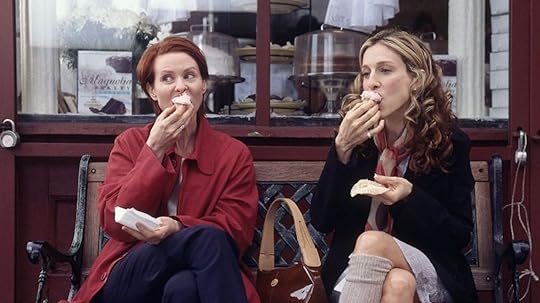
Photo: HBO
Following four friends in NYC, Sex and the City had a little bit of everything — romance, drama, and comedy. In season three, two of the four, Carrie and Miranda, go for a cupcake break to discuss their loves lives. It was this short scene that took Magnolia Bakery from a local shop on Bleecker Street to an international chain. Magnolia’s decor was designed in a 1950s-style and has a long menu that includes a variety of cupcake flavors (starting at $3.95 a pop), cakes ($5 for a slice), cookies, and other desserts.
Where: West 11th Street, 401 Bleecker St, New York, NY 10014
12. Mystic Grill from The Vampire Diaries
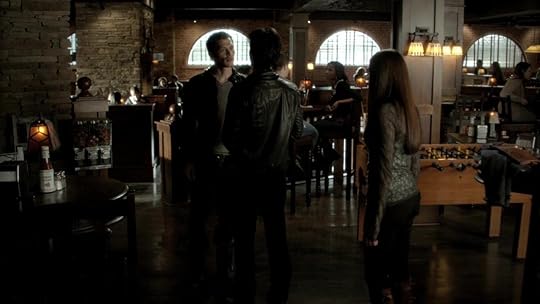
Photo: The CW
The Mystic Grill is to The Vampire Diaries what the Central Perk coffee shop is to the characters in Friends. Most, if not all, characters in the CW drama have several scenes within the bar/restaurant’s walls. When TVD started in 2009, the Mystic Grill’s exterior shots were filmed on location in Covington, Georgia, and the interior scenes were filmed in a studio in Atlanta. In 2013, a real Mystic Grill opened up in Covington that looks exactly like its namesake, and the show began to film both the inside and outside shots there when possible. Owned by locals, the restaurant serves up American cuisine and sources its ingredients from local farmers. The only difference between the two is that the real one has a rooftop overlooking the historic square that’s perfect for a sunny day. Visit on a weekend and you might even catch some live music to accompany your meal.
Where: 1116 Clark St SW, Covington, GA 30014
13. Twisters from Breaking Bad

Photo: AMC
Breaking Bad is an award-winning AMC drama about a high school chemistry teacher, Walter White, who gets diagnosed with cancer and turns to making meth as a means of leaving money behind for his family. Several important scenes occur in a fast-food restaurant chain called Los Pollos Hermanos, which is owned by one of the show’s antagonists, Gustavo Fring. While Los Pollos Hermanos isn’t a real chain, the location used for it is. The spot is really called Twisters, a fast-food chain specializing in New Mexico’s typical fare. There are now over 20 different Twisters locations, but the one used for the show is instantly recognizable and has the same facade shown in Breaking Bad. A framed photo of Los Pollos Hermanos hangs on the wall inside.
Where: 4257 Isleta Boulevard SW, Albuquerque, NM 87105 

More like this: All the filming locations you can visit from this year’s Oscar Best Picture nominees
The post 13 famous restaurants from TV and film you can actually eat at appeared first on Matador Network.

Tourist arrested for flying drone
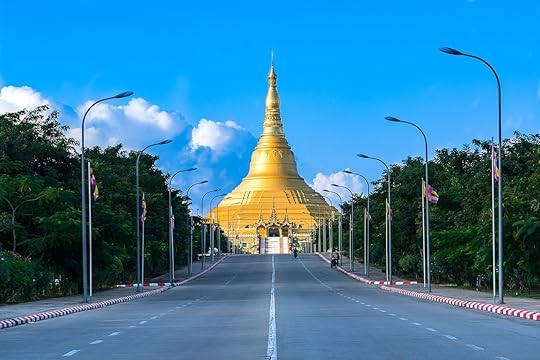
Poor drones users seem to be wreaking havoc wherever they go. After creating chaos at several airports for flying too close to aircrafts earlier this year, another drone incident took place, in Myanmar this time. Last week, a French tourist was arrested for allegedly flying a drone close to Myanmar’s Parliament building in Naypyidaw. 27-year-old Michel Desclaux might not only be guilty of flying in a restricted area, but also of bringing a drone into Myanmar illegally, facing up to three years in prison.
The country’s law on unmanned aerial vehicles laws are extremely strict. Drones are banned in many parts of the country, including much of Yangon, near a palace in Mandalay, around airports, above large gatherings of people, and on and near private property without proper permission. Ye Tun Aung, who sells drones in Mandalay, complained to The New York Times that in certain areas, the anti-drone warnings are not clear and visible enough to tourists. There is a small sign on the Parliament building in Naypyidaw explaining the drone ban, but only the word “drone” is in English, the rest is in Burmese.
This isn’t the first drone-related incident in Myanmar. In 2017, two foreign journalists, a Burmese journalist, and their driver were arrested for flying a drone in Naypyidaw, and served two-month prison sentences. 
H/T: The New York Times

More like this: Here’s why you shouldn’t boycott travel to Myanmar
The post Tourist could go to jail for flying a drone in Myanmar appeared first on Matador Network.

Friendliest LGBTQ countries Europe
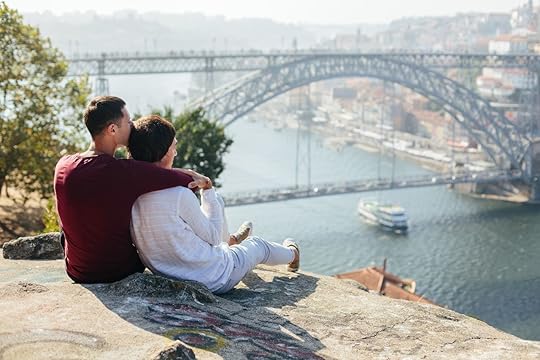
Compared to every other continent in the world, Europe has proven time and time again that it truly values its LGBTQ population. Whether this is demonstrated through anti-discrimination legislation, queer representation in government, or rich and diverse tourism, a large majority of the countries have set the bar for equality and acceptance.
In order to understand what countries in Europe are the most accepting of its LGBTQ citizens and international tourists, the European Region of the International Lesbian, Gay, Bisexual, Trans, and Intersex Association (ILGA) works to uncover the most accepting countries in Europe. It does so by ranking them based upon the following categories: equality and non-discrimination, family (adoption rights), hate crime and hate speech, legal gender recognition and bodily integrity, civil society space, and asylum. In short, it takes those countries with the most legislation protecting their LGBTQ citizens, along with taking account of how accepting the general population is of same-sex relationships and transgender people and unearths the best (and worst) attributes of every country as it relates to LGBTQ rights and acceptance. So, with that being said, these are ILGA’s top picks — some just might inspire your next vacation.
10. Sweden

Photo: dimbar76/Shutterstock
Sweden contains some of the most progressive LGBTQ legislation in the world, serving to protect and promote the queer culture in its country. Sweden actually became the first country to allow transgender people to legally change their gender post-sex reassignment surgery, enacted in 1972 — and shortly after, in 1979, being transgender was no longer considered a mental illness in the country. Since 1987, discrimination on the basis of sexual orientation and gender identity has been banned in Sweden — followed by equally progressive legislation that made it possible for every LGBTQ person to feel welcome in the country.
9. Spain
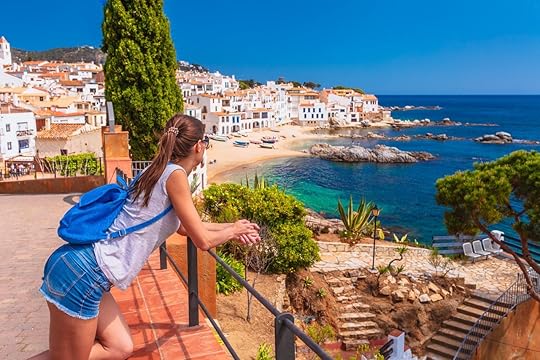
Photo: Oleg_P/Shutterstock
In the very beginning of Spain’s history, the Romans were considered to be one of the first ancient societies to allow and normalize sexual interaction between men. In fact, in Ancient Rome, marriage between two men was actually legal. Between that period of time and 1979, the legalization of same-sex sexual activity flip-flopped significantly as the opinions of the government and the people changed. Despite this turbulent time, Spain has somewhat made up for this indecision by making the country a more accepting place for its LGBTQ community, allowing them to donate blood, serve openly in the military, get married, and adopt children since 2005. Gran Canaria, an archipelago off the Atlantic coast that belongs to Spain, is considered an international LGBTQ tourist destination.
8. Denmark

Photo: Oksana Ph/Shutterstock
Similar to its Scandinavian neighbors, Denmark is incredibly accepting of LGBTQ people. In 1989, Denmark became the first country in the world to legalize same-sex unions — eventually legalizing same-sex marriages in 2012. Since 1989, Denmark has remained ahead of its time, banning discrimination on the grounds of sexual orientation since 1996, and even giving transgender people the right to change their legal gender without a diagnosis, hormone therapy, surgery, or sterilization. Its capital, Copenhagen, has often been named one of the most LGBTQ-friendly cities in the entire world, famous for its annual Pride parade, combining political issues with films, concerts, and a parade.
7. Portugal

Photo: AnnaTamila/Shutterstock
Though LGBTQ people were commonly oppressed between 1932 and 1968 during the Salazar dictatorship, Portuguese society has become incredibly accepting of all members of this community, along with the decriminalization of same-sex activity in 1983. To date, Portugal is one of only a few countries to actually include a ban on discrimination based on sexual orientation in its constitution. Not only that, but Portugal is said to have one of the most advanced gender identity laws in the world, which simplifies the process of sex and name change for transgender people, ratified in 2011.
While the country is still heavily influenced by Roman Catholicism, it still does contain a thriving LGBTQ scene, with Lisbon and Porto maintaining some of Europe’s best and brightest gay bars and nightclubs.
6. France
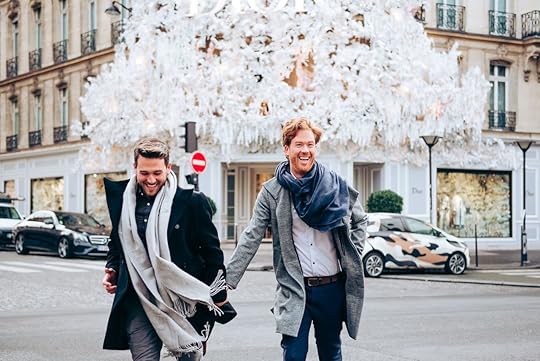
Photo: Anastasiya Ramsha/Shutterstock
The LGBTQ rights in France have come a long way since the days of the Ancien Régime when same-sex sexual activity was considered a capital crime punishable by death. However, in a move that made France one of the more liberal countries in the world during this time, all sodomy laws were repealed in 1791 during the French Revolution — and remained that way until new laws regarding indecent exposure were created to target homosexuals in 1960. This slow acceptance eventually gave way to new laws, enacted between 1985 and 2012, banning discrimination against all members of the LGBTQ community. In fact, France became the first country in the world to declassify transgenderism as a mental illness in 2009, according to Time Magazine. Years later, Paris has become a prime getaway for queer people — with a number of bars, restaurants, and establishments run by and for the LGBTQ community.
5. Finland

Photo: Grisha Bruev/Shutterstock
For decades, Finland has been considered one of the most accepting and liberal countries in the entire world. Since 1995, it has been a criminal offense to discriminate against members of the LGBTQ community based on their sexual orientation, and then the same protections were given for transgender people in 2005. Then, in 2013, the Finnish Medicines Agency made Finland one of the few countries in the world to repeal a permanent blood donation ban for men who have had sex with other men. And, while there is still some objection to LGBTQ marriages being performed in churches across the country, most citizens want to foster a nurturing and accepting environment for all people.
4. United Kingdom
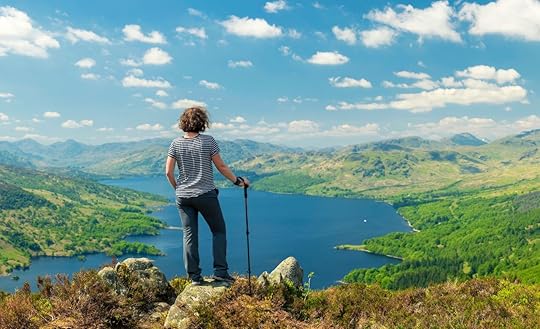
Photo: Dmitry Pistrov/Shutterstock
At 73.48 percent accepting, the United Kingdom has improved dramatically from its once medieval restrictions on members of the LGBTQ community, in which accusations of such activity was punishable by death until 1967. Strangely enough, these restrictions only existed against gay men — never lesbians. Beginning in 2010, discrimination protections have existed for all members of the LGBTQ community, with same-sex marriage legalization following close behind in England, Wales, and Scotland in 2014. As far as acceptance, according to a 2013 Pew Research poll, an overwhelming 76 percent of the UK agreed that homosexuality should be accepted by society — and this might also point to the large amount of LGBTQ representation in the government. At this point in time, the United Kingdom holds the world record for having the most out members of the LGBTQ community serving in Parliament, with 45 out LGBTQ MPs elected during the 2017 election. There is a particularly thriving LGBTQ scene in Brighton on the south coast of England, as well as other major UK cities like Cardiff, Bristol and, of course, London.
3. Norway
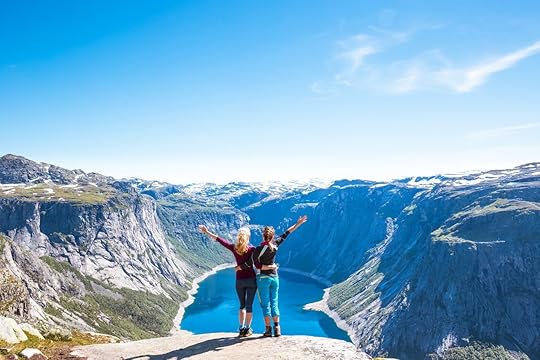
Photo: Ikoimages/Shutterstock
Like most of Scandinavia, Norway is incredibly accepting of those who identify as a part of the LGBTQ community. Ranking third on ILGA’s list, Norway has made it illegal to discriminate against LGBT people since 1981. Decades later, same-sex marriage, adoption, and IVF/assisted insemination treatments for lesbian couples have been legal since 2009. Then, seven years later, Norway became the fourth country in Europe to pass a law allowing transgender people to change their legal gender. Perhaps most prolifically, all members of the LGBTQ can openly serve in the Armed Forces — and have been doing so since 1979.
2. Belgium

Photo: Anton Ermachkov/Shutterstock
Coming in at second on the list, Belgium is said to be 78.76 percent accepting of the LGBTQ community. Considered to be one of the most progressive countries in Europe, Belgium legalized same-sex sexual activity centuries ago in 1795. Then, in 2003, Belgium became the second country in the world to take the next step and legalize same-sex marriage. That same year, discrimination protections based on sexual orientation in housing, employment, and public and private accommodations were enacted — with the same protections written to stop discrimination based on gender identity and expression in 2014. Polls throughout Belgium demonstrate that everyone is relatively accepting of LGBTQ people — and queer people feel fairly represented in government. Interestingly enough, the previous prime minister, Elio Di Rupo, is one of the few openly gay men to become a head of state in the world.
1. Malta

Photo: Christian Balate/Shutterstock
Named as the most LGBTQ-friendly country in Europe with a rating of 94.04 percent accepting, Malta has become a haven for queer fun and acceptance. To date, Malta is one of only five countries in the entire world to have enforced LGBTQ rights at a constitutional level, according to a study by UCLA, adding protection from any discrimination on the basis of sexual orientation and gender identity. Especially in the workforce, members of the LGBTQ community don’t have to worry about being discriminated against, as the government ensures that they’ll be given an equal opportunity to thrive. The only downside of this incredibly accepting community is now the lack of bars and institutions dedicated to the LGBTQ community, as every restaurant, bar, and shopping center is considered to be accepting of any lifestyle. 

More like this: The 25 best LGBTQ bars and nightclubs in the US
The post The 10 most LGBTQ-friendly countries in Europe appeared first on Matador Network.

Matador Network's Blog
- Matador Network's profile
- 6 followers



